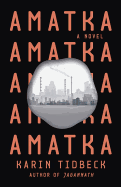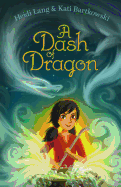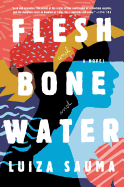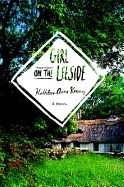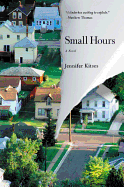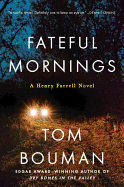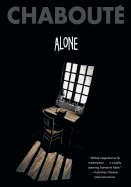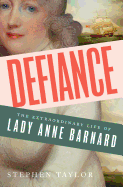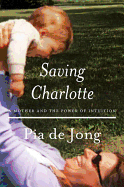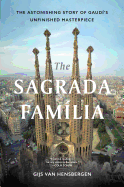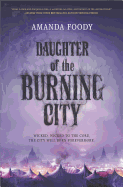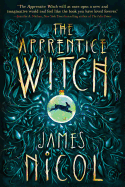Friday, July 28, 2017
Leadership is always a tough position to take. All eyes on you and your every move. Being a religious leader raises those stakes, especially if you're a Muslim one prodded in front of cameras after 9/11. Haroon Moghul was 20-something and leading New York University's Islamic Center when his religion became a lightning rod for social and political ire.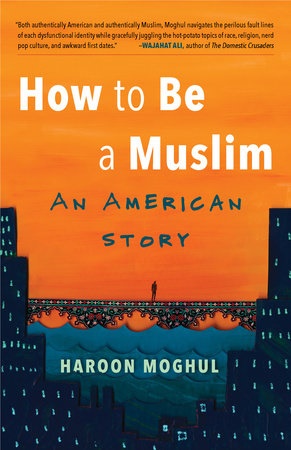 While that's an undesirable spotlight for anyone to occupy, it caught Moghul in the midst of an ongoing crisis of faith, one that began when he was a teen and frequently left him wondering if he was a fraud. Originally triggered by adolescent feelings of love and lust, his dark night of the soul grew over time to swallow his marriage, mind and nearly his life. Fortunately, a Pakistani Muslim psychiatrist was able to clue him into what else was weighing him down: bipolar disorder.
While that's an undesirable spotlight for anyone to occupy, it caught Moghul in the midst of an ongoing crisis of faith, one that began when he was a teen and frequently left him wondering if he was a fraud. Originally triggered by adolescent feelings of love and lust, his dark night of the soul grew over time to swallow his marriage, mind and nearly his life. Fortunately, a Pakistani Muslim psychiatrist was able to clue him into what else was weighing him down: bipolar disorder.
What endears me to memoirs about belief is when they're written with profound candor--ditching any sense of "holier than thou." You can see it in Kathleen Norris's classic The Cloister Walk and Shalom Auslander's caustic Foreskin's Lament. Somewhere between Norris's devotion and Auslander's desertion lies How to Be a Muslim (Beacon Press, $17). Moghul takes many an opportunity to delve into Islamic history as he strives to sort himself out. Even when he's in a flat-out run from his Muslim upbringing, he catches whiffs of the Prophet and the caliphs in his own experiences. They are echoes that ultimately draw him back, but not without significant changes in his relationship to the religion.
In time, Moghul learns to manage his mental health and even begins to see where it dovetails with his faith. He aims for a life "in awe at the privilege of existence" as he learns and relearns the love and gratitude that inhere in Islam. "Because we exist. But we did not ask to." --Dave Wheeler, associate editor, Shelf Awareness
The Confusion of Languages
by Siobhan Fallon
In The Confusion of Languages, the suspenseful first novel from Siobhan Fallon (You Know When the Men Are Gone), the friendship of two soldiers' wives in post-Arab Spring Jordan strains under the weight of their diverging outlooks, with devastating consequences. In other circumstances, Cassie and Margaret might not have become friends; their differences seem extreme. But when the two Americans meet at the Jordanian embassy, where both their husbands are stationed, they forge a connection.
Cassie's marriage to Dan has soured over their inability to conceive. Her bitterness and suspicion has destroyed friendships with other embassy wives, but as Margaret's sponsor, she is determined to befriend and protect the younger woman. So when Margaret vanishes, Cassie stumbles upon her friend's diary and begins to piece together the truth of the disappearance and her own part in it.
Fallon, who recently lived in Jordan and now resides in Abu Dhabi, vividly portrays life as an American expat in the Middle East. Cultural traditions of hospitality clash with religious expectations of modesty and male-female interactions. While Margaret runs unnecessary risks in her haste to embrace a foreign land, Cassie cheats herself out of authentic relationships through her obsession with safety. With a studied look at the thin line outsiders must walk, whether in someone else's country or someone else's living room, Fallon digs into the complications of friendship. The Confusion of Languages examines the barriers that differing expectations place between individuals and cultures. Cerebral but still taut with suspense as Cassie unravels her friend's fate, this novel's sophisticated pacing and emotional core set it apart from the pack. --Jaclyn Fulwood, blogger at Infinite Reads
Discover: Two American military wives bond in Jordan, but their disagreements on interacting with the country and its natives lead to confusion and disaster.
Flesh and Bone and Water
by Luiza Sauma
Luiza Sauma's first novel features an upper-class family using indulgence and dishonesty to deal with loss. Flesh and Bone and Water opens with a letter addressed to the narrator, André Cabral, a doctor in his late 40s living in London, separated from his wife and long estranged from his home country of Brazil. The novel then shifts to tell much of André's story through flashbacks, from his childhood in Rio de Janeiro through his now-failing marriage in "o primeiro mundo, the mythic first world" of Europe.
André was a member of Rio's privileged class, his family served by empregadas (maids) and guarded from "undesirables" in a fortress-like apartment building with spiked walls, CCTV and porteiros (caretakers). But unlike his friends, he wonders about the differences between his life and that of his family's empregadas, Rita and her daughter, Luana. Though he's dating an appropriately upper-class schoolmate, André becomes obsessed with his maid. And now, all these years later, middle-aged André is feeling adrift in a country not his own, when he gets a letter from Luana.
Flesh and Bone and Water is André's story. But it is also about race and class in 1980s Brazil, the struggles of a family torn by grief and the uprootedness of expatriates. Sauma's prose is lush with sensory detail, emphasizing the sights, sounds, smells and tastes of a Brazil that is far from André's daily reality, yet close to his heart: trickling sweat, comforting coconut milk, hot beach sand underfoot. Deeply atmospheric, Flesh and Bone and Water is an impressive debut. Strong characters, a twisting plot and compelling settings make this a pleasurable and memorable read. --Julia Jenkins, librarian and blogger at pagesofjulia
Discover: Heady memories return to a middle-aged man in this atmospheric novel set in 1980s Brazil.
Girl on the Leeside
by Kathleen Anne Kenney
Playwright Kathleen Anne Kenney unfolds Siobhan Doyle's coming-of-age story in Girl on the Leeside. Since her mother's death in an IRA bombing when Siobhan was a toddler, she has lived a quiet life in rural western Ireland with her uncle Keenan. Steeped in the traditions of village life and ancient Irish poetry, both Siobhan and Kee are content with their nearly solitary existence, serving customers in their family's pub, the Leeside, and discussing literature. But when American professor Tim Ferris comes to visit the Leeside and talk about poetry, Siobhan is drawn to him in a way she can't explain. As she wrestles with her unfamiliar feelings for Tim, she also learns that her father, who she thought had also died in the bombing, is still alive.
Though this is mainly Siobhan's story, Kenney draws other characters and their struggles with deft, vivid strokes: Uncle Kee, who was devoted to his rebellious younger sister (Siobhan's mother); Katie O'Farrell, a brash horse breeder whose feelings for Kee run deeper than she cares to admit; Siobhan's father, John, a former British soldier, who has been chasing his own demons but is a fundamentally decent man. And Galway Gwen, the enigmatic traveler who comes through with her family once a year, provides both a connection to Ireland's history and a source of wisdom and comfort for Siobhan.
Quiet, lyrical and sprinkled with verses of the Irish poetry Siobhan loves, Girl on the Leeside is a slim, beautiful debut about one woman taking her place in the world. --Katie Noah Gibson, blogger at Cakes, Tea and Dreams
Discover: Playwright Kathleen Anne Kenney's debut novel is a lyrical coming-of-age story set in rural western Ireland.
Small Hours
by Jennifer Kitses
The hours are anything but small or quiet in Jennifer Kitses's first novel; they unspool during a single day in the lives of her protagonists Helen and Tom. In their early 40s, the couple moved with their toddler twin daughters to a small town up the Hudson from their cramped apartment in Queens, N.Y. Everything looked rosy when they could finally afford the roomy suburban house, but the Great Recession put their mortgage underwater and took their secure jobs with it. Told alternatively from both Tom's and Helen's points of view, Small Hours is the story of a seemingly stable marriage unraveling in one day, through a minefield of secrets and a series of bad choices. A former reporter at Bloomberg News, Kitses cranks up the tension hour by hour as Tom and Helen fall apart mistake by mistake.
Helen works all hours from home "designing visuals for marketing campaigns to sell products with names like Iron Fuel, Molten Rage, and Jacked 'n Loaded." Tom takes the 90-minute train ride up and back to Midtown to edit science stories for a wire service with a draconian boss and an attractive intern. His day begins with a surprise excursion with his daughters to a waterfall outside town, which turns into a crying jag after the girls' awkward potty stop in the woods. Behind on a big deadline, Helen's on edge during a morning walk with the girls when she is confronted by two teen girls smoking and taunting her at the playground. And their day gets worse as they juggle poorly paid jobs, exhausting parenting, extramarital temptations and ever-present financial stress. Dissecting 24 hours, Kitses artfully blows the covers off a couple's would-be blissful marital bed and bucolic suburban life. --Bruce Jacobs, founding partner, Watermark Books & Cafe, Wichita, Kan.
Discover: In her first novel, Jennifer Kitses winds up the tension in a suburban couple's seemingly bucolic family as she depicts one day in their lives.
Mystery & Thriller
Fateful Mornings
by Tom Bouman
Tom Bouman won the 2015 Edgar Award for Best First Novel with Dry Bones in the Valley, a country noir set in rural Pennsylvania. Henry Farrell and Wild Thyme Township return in Bouman's comparably compelling yet vastly different Fateful Mornings. Henry is the lone cop in town, a good man who is fallible and sometimes lazy. Wild Thyme remains punctuated by drugs, alcohol, petty crime, fracking and the oddball miscreants who partake in them.
Told over the span of more than a year, this slice of Henry's life begins with one of many fateful mornings. Henry is called to a job site where Kevin O'Keeffe is rambling about his partner, Penny Pellings, going missing. While Kev is less clear on whether there might also have been a shooting, it's not long before a body turns up. As the multi-fronted investigation moves forward at a slow burn, so does Henry. He plays music in a band, helps his friend Ed on a construction project, engages in romantic predicaments and doggedly pursues the ripples from Penny's disappearance.
Like Henry, Bouman works with quiet confidence, his narrative strong and compelling without unnecessary flash. A smart writer who respects his reader, Bouman evidences some nifty narrative tricks and writes about the crafts of music, carpentry and policing with detail that adds authenticity to Henry's world. The pace amplifies at the midpoint, but Fateful Mornings is less about the investigation and more about how life's flow can be dammed (and damned) and redirected by circumstance. --Lauren O'Brien of Malcolm Avenue Review
Discover: A one-man-department cop deals with the vagaries of his rural mountain township, including the disappearance of a young woman that has implications beyond his small town.
Science Fiction & Fantasy
Amatka
by Karin Tidbeck
In the opening pages of Amatka, Karin Tidbeck (Jagannath) introduces readers to Brilars' Vanja Essre Two, traveling by train to conduct research in the colony of Amatka. Vanja notes the slippery, scratchy fabric of the train's benches, the washbasin and the table in the car, and recognizes each item's careful labeling. "Suitcase," she whispers to her luggage, to maintain its shape.
As Vanja begins her research in Amatka, this strange, slightly eerie colony comes to life. With sparse language, Tidbeck describes objects that dissolve into a potent paste when not well labeled, a lake that spontaneously freezes and unfreezes with a thundering each night, and the tight controls that the Committee keeps over Amatka's colonists. This language hints at a slowly building sense of dread within the colony. In a world in which words have the power to shape (and therefore destroy) anything that takes a physical shape, be it pencil or building, "a citizen who doesn't guard their words could destroy their commune."
Amatka asks many questions of its readers, chief among them: What does it mean to exist? What do we value most when we know nothing may be permanent? What sacrifices do we make for the greater good, and what individual freedoms must we refuse to yield? Tidbeck's slim but brilliant novel brings to life a world at once familiar and entirely foreign, packed with existential questions that linger long beyond the last page--and written without a single word out of place. --Kerry McHugh, blogger at Entomology of a Bookworm
Discover: Tidbeck's surreal novel imagines a colony in which physical objects are shaped by the words used to describe them.
Graphic Books
Alone
by Christophe Chabouté
In 2008, when Christophe Chabouté's Tout Seul (Alone) was released in France, it was hailed as a masterpiece in storytelling and declared an official selection for the prestigious Angoulême International Comics Festival. This black-and-white graphic novel is a visually poetic, thought-provoking tale of how isolation contrasts with the rich realm of the imagination.
Two men on a barge deliver supplies to an isolated lighthouse in the middle of the sea. Its lone occupant is a disfigured man who has never ventured beyond the lighthouse's watery boundaries. The boatman, a recently released convict, takes an interest in the hermit and begins to ask his skipper questions about the man's life. The scene pans from the boat to the sea and back to the lighthouse, where it exposes the hermit's daily routines, which include fishing by day, keeping the detritus he catches on a windowsill, and performing routine maintenance around the lighthouse. Before bedtime, the hermit drops a dictionary onto his desk and selects a random word on a random page. This is his only mode of entertainment apart from watchful contemplation.
Chabouté's (Park Bench) drawings show the wonderment and quiet delight of the hermit's imagination as he conjures up his visual definitions. Photos the boatman has left behind with a shipment prompt him to question his place in the world, the panels widening against a canvas of sea and sky, heightening the sense of aloneness and growing despair. The result is a wistful and evocative story that explores the power of the imagination and a yearning for connection. --Nancy Powell, freelance writer and technical consultant
Discover: A French cartoonist explores solitude through a visually stunning tale of a man living in a lighthouse with only a dictionary and his imagination.
Biography & Memoir
Defiance: The Extraordinary Life of Lady Anne Barnard
by Stephen Taylor
Vivacious, witty, sensitive and insecure, Anne Lindsey (later Lady Anne Barnard) lived a bohemian life in Georgian Scotland and England, packed with friendships, literature, adventures, lovers and travel to France and the Cape of Good Hope colony in South Africa. Her friends included the dissolute Prince of Wales. She didn't marry until she was 40. To her respectable family's dismay, she wrote six volumes of memoir, plus diaries, literary works and a vast collection of letters. For Defiance, Stephen Taylor gained access to the family archives and produced this carefully researched, well illustrated and hugely entertaining biography.
"A literary education combined with an austere upbringing gave her a perspective unusual for a young woman of her class.... When she said, as she did, that simple pleasures brought the greatest delight, it was without affectation. When she said that marriage must go with love, it was with conviction." The oldest child of an elderly Scottish earl and his embittered young wife, Anne Lindsey grew up abused and neglected in a country house with a remarkable library. In her teens, she and her favorite sister moved to Edinburgh where they met David Hume, Samuel Johnson and other stars of the Enlightenment. A few years later they plunged into London's fashionable society. Taylor keeps the action moving. He intelligently mediates the social norms of then and now, and shows both the costs and the rewards of Lady Anne's idiosyncratic choices. This is a brilliant biography of a woman with unusual freedom for her time and the courage to enjoy it. --Sara Catterall
Discover: This biography based on a large family archive tells the dramatic bohemian adventures of a clever, charming and independent Georgian lady who lived from 1750 to 1825.
Saving Charlotte: A Mother and the Power of Intuition
by Pia de Jong
When Pia de Jong gave birth to her third child, a girl, it was apparent from the start that something was wrong with her. When de Jong pressed on her daughter's back, a blue spot appeared, "the color of a lake in a remote forest around noon." Soon, there were more spots and the child was diagnosed with a rare, dangerous, most often fatal form of leukemia.
Saving Charlotte is de Jong's tender memoir of the first anxiety-filled year of Charlotte's life, when de Jong and her husband, Robbert, made the decision to wait and see rather than start an aggressive form of chemotherapy, which easily could have killed their newborn. Suddenly de Jong's life compressed into a tiny world: weekly doctor's visits; tending to Charlotte as well as two healthy sons; their house on a canal in Amsterdam and the park she frequented where her boys could play. In lyrical prose, de Jong details the thoughts and emotions that swallowed her that first year, memories of her own childhood and the antics of her sons. With finesse, she blends these with the stories of her quirky neighbors: the prostitute across the alley whose bedroom is visible from the house; the park attendant; the man who protects the alley; and the older gentleman across the canal with whom she had tea and wine. The tension and anxiety that threaten de Jong and her family are happily overshadowed by the extreme love this mother feels for her child. --Lee E. Cart, freelance writer and book reviewer
Discover: When their daughter is diagnosed with a rare form of leukemia, rather than start an aggressive round of chemotherapy, the parents put faith in nature.
Art & Photography
The Sagrada Família: The Astonishing Story of Gaudí's Unfinished Masterpiece
by Gijs van Hensbergen
In the historical context of church construction--in which France's Strasbourg Cathedral took almost 500 years to finish--Antoni Gaudí's Basilica and Expiatory Church of the Holy Family in Barcelona, still being built after 135 years, is just a piker. As Gijs van Hensbergen paraphrases Gaudí, "With a client as patient as God, what was a mere 150 years?" Van Hensbergen (Guernica), an art historian and television commentator, has already written a biography of Gaudí, so his illustrated The Sagrada Família is more of a study of the building itself. With more than four million visitors a year, the Sagrada Família is one of Europe's most popular attractions.
With an ecumenical scholar's background, van Hensbergen positions Gaudí among the architects and artists of his time, like the modernism of Manet and the Catalan art nouveau movement, with its emphasis on craft, material and decoration. The son of a small forge shop smithy, Gaudí grew up watching chunks of steel be hammered into useful and beautiful shapes. Trained in fundamental architectural and engineering skills, Gaudí, however, preferred to design and build conceptually by touch--more of a field architect than one bound by drawings and specifications. He was killed in a horse tram accident on his way to church for his daily confession. Bystanders thought he was a homeless bum and left him in the street without medical help. His masterpiece still had 100 years of construction ahead until its expected completion in 2026. In the larger scheme of things, what's another nine years--or more? --Bruce Jacobs, founding partner, Watermark Books & Cafe, Wichita, Kan.
Discover: With the sharp eye of both an art historian and Gaudí scholar, Gijs van Hensbergen takes readers on a tour of the Sagrada Família.
Children's & Young Adult
A Dash of Dragon
by Heidi Lang and Kati Bartkowski
As the youngest master chef in her prestigious academy's 300 years of producing heroes, artists, scholars and chefs, 13-year-old Lailu Loganberry has a dream: to run a restaurant that sells monster cuisine, food made from "mystical" beasts like kraken and batyrdactyl that she herself has hunted and cooked. To achieve full Master Chef status, she needs to complete an apprenticeship, but the only person who agrees to mentor her is a has-been chef named Slipshod. Lailu's initial faith in Master Slipshod begins to weaken when she learns that, to pay for the restaurant's opening, he has made a dangerous contract with a loan shark named Mr. Boss. And once they've entered Mr. Boss's shady world, the doors open wide to a gaggle of other disreputable and deadly characters, including counterspies, nasty elves and Lord Elister the Bloody, king's executioner. Add to the pot Lailu's nemesis, wealthy classmate Gregorian LaSilvian, who is garnering all the media attention with his restaurant; Vahn, a handsome, cocky hero-in-training who consistently calls the star-struck Lailu by the wrong name; and best friend Hannah, who is having a little trouble with her habit of "re-homing" valuable items from elves and other wealthy families, and you have a stew that rivals Lailu's batyrdactyl soup with mountain dragon flavoring.
A Dash of Dragon, by sisters Heidi Lang and Kati Bartkowski, is fast-paced, funny and chock-full of action. Lailu is a brilliant chef, a brave and skilled hunter and a savvy business owner--but she is still very much a 13-year-old, whose curses include "What the spatula?" and, when she's really upset, "Butter knives!" Absolutely charming. --Emilie Coulter, freelance writer and editor
Discover: A 13-year-old master chef specializing in monster cuisine battles loan sharks, elf mafia and irritatingly meddlesome boys in this thoroughly enjoyable middle-grade fantasy.
Daughter of the Burning City
by Amanda Foody
Sorina is the adopted daughter of Villiam, the proprietor of the Gomorrah Festival. More than a show, Gomorrah is home to tens of thousands of people who would be considered fringe members of society: jynx-workers, male and female prostitutes and assassins. Most members of the smoldering city--the smoke supposedly trapped souls on the festival borders--are either Gomorrah-born or from the Down-Mountains, a place of warm weather and diverse ethnicities.
Sorina, now 16, is the next in line to run the festival. Unlike her father, she is a powerful jynx-worker, capable of creating illusions that not only look, feel, sound and smell real, but can, in some cases, even become their own beings. In this way, she has created a family that includes (among others) a tree-man, a two-headed boy, a woman with inhuman strength and a young girl with the talons and wings of a hawk. She feels at home among these self-created "freaks" because she--born without eyes yet capable of sight--feels like a "freak" herself. Now traveling in the Up-Mountains, Sorina finds herself and her family in danger; someone (somehow) kills one of her illusions... and then another. Desperate to stop the destruction of her family, Sorina begins working with a young, disagreeable "gossip-worker" who knows all of the ins and outs of Gomorrah while also possessing powerful magic of his own: he can be killed but can never die.
The world of Daughter of the Burning City is astoundingly vivid and complex, the smells, sounds and sights of the smoldering city/traveling carnival near tangible. Amanda Foody's deliciously dark and magical whodunit has world-building so rich, the reader (like visitors to Gomorrah) is likely to leave with a hangover. --Siân Gaetano, children's and YA editor, Shelf Awareness
Discover: Sorina, the daughter of the proprietor of the Gomorrah Festival, a traveling circus of magic, freaks and debauchery, must find the person killing her family members before they can attack again.
The Apprentice Witch
by James Nicol
Arianwyn Gribble is mortified when her magical assessment by the Civil Witchcraft Authority goes horribly wrong. Instead of focusing on the four cardinal glyphs, her mind is taken over by a larger, bolder symbol, an impossible one that "didn't really exist except in her imagination." The evaluation gauge undergoes a power surge and fails to detect the required level of magical energy. Arianwyn's humiliating result is officially classified as "ungraded." Instead of the bright silver star of a fully trained witch, a "dull bronze disc" is pinned to her coat, identifying her as an apprentice who "has not yet reached the maturity of her powers."
Nevertheless, Arianwyn's service is needed and she takes a position in the small town of Lull, near the Great Wood. Rich in natural magic, "a quiet and pleasant town to live in," Lull has been without a witch for many years and is willing to welcome an apprentice. Settling into her new home, Arianwyn manages to make charms and deal with the less dangerous beasts that plague the neighborhood. Gradually, she grows more confident and the townsfolk come to accept her. But something huge, dark and twisted is haunting the Great Wood, and dangerous patches of hex mold are spreading about the area. And why does Arianwyn keep seeing visions of that strange, "tempting and terrifying" glyph?
James Nicol's world of The Apprentice Witch is comfortable, funny and well-imagined. Underneath all the magic, fey creatures and monsters, Arianwyn's struggles with self-doubt will ring true with readers. A few loose plot points hint at a sequel, but this one stands strongly on its own. --Lynn Becker, blogger and host of Book Talk, a monthly online discussion of children's books for SCBWI
Discover: Distracted by a mysterious magical glyph, a witch-in-training fails her evaluation and is sent off to a remote town, in disgrace, as an ungraded apprentice.



